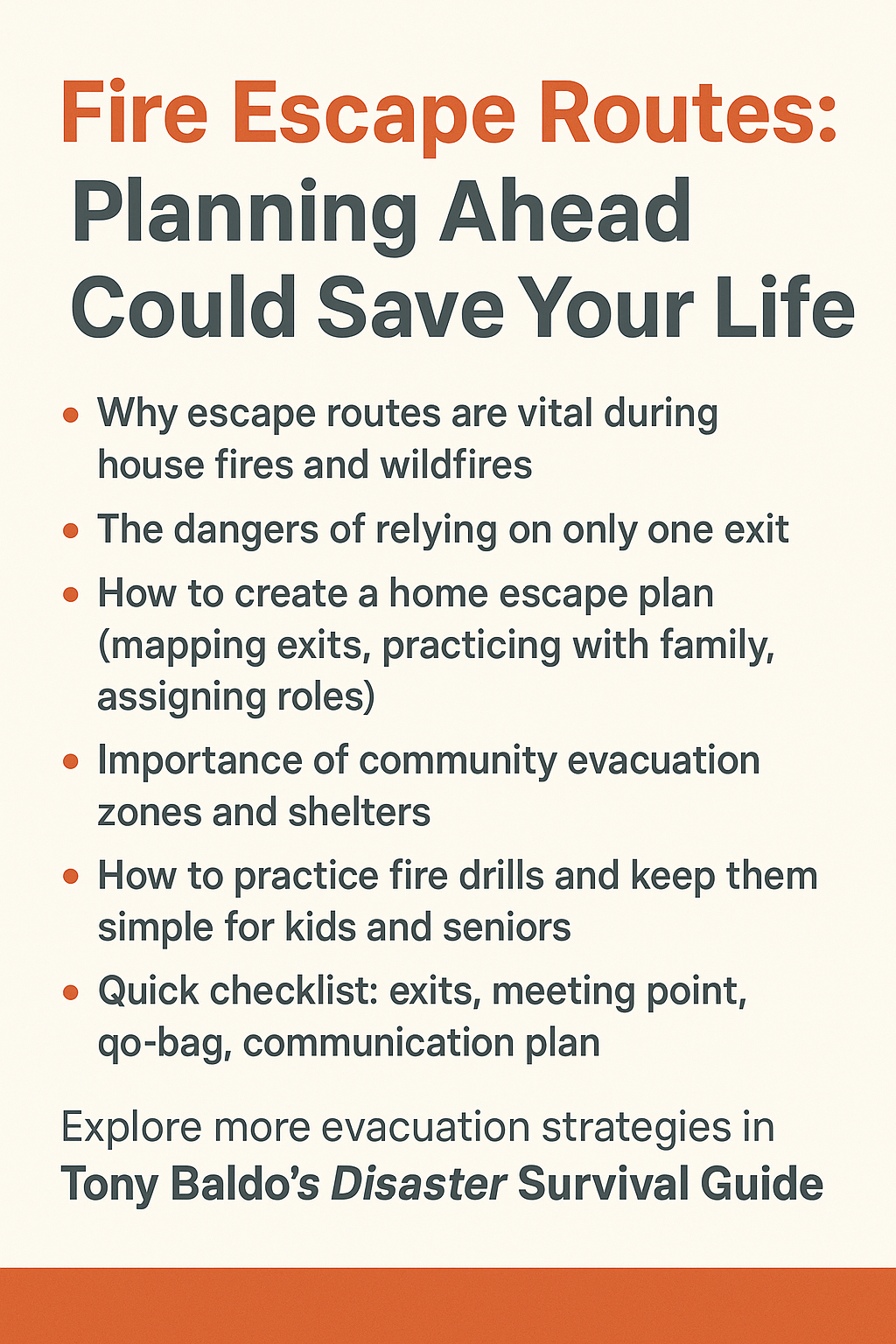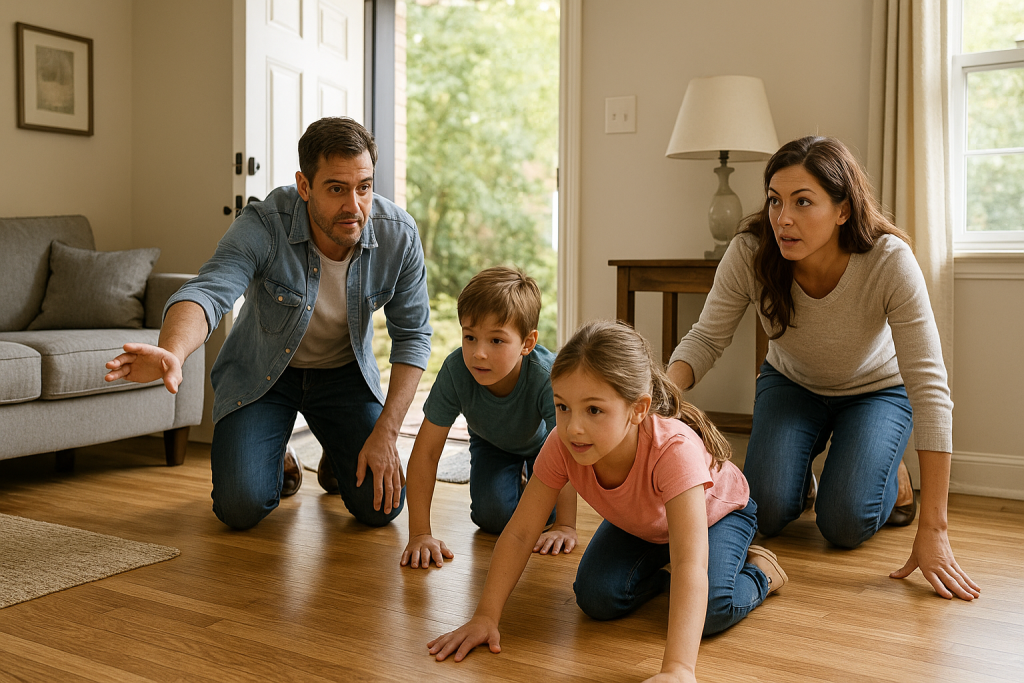Why Fire Escape Routes Are Critical for Home Safety
When disaster strikes, seconds matter. Fires move quickly, filling homes with smoke, heat, and chaos in minutes. A fire escape plan isn’t just a recommendation—it’s a survival necessity. Whether it’s a kitchen fire spreading through a house or a fast-moving wildfire threatening an entire neighborhood, preparation makes all the difference.
The Reality of House Fires and Wildfires
House fires can engulf an entire room in under five minutes. Wildfires, driven by wind and dry conditions, can move even faster, cutting off main roads and trapping entire communities. Without clear home fire safety and wildfire evacuation routes, families risk being caught unprepared.
How Panic and Poor Planning Endanger Lives
In emergencies, panic sets in quickly. People forget obvious exits, make rushed decisions, or try to grab belongings instead of moving to safety. A rehearsed plan removes guesswork, keeping everyone focused on the goal: getting out alive.
The Risk of Relying on Just One Exit
Common Mistakes Families Make During Emergencies
Many households assume the front door will always be the way out. But what if flames block that path? Or smoke fills the entryway? Relying on one route can leave families trapped.
How Multiple Escape Routes Improve Survival Chances
By identifying at least two exits per room, families double their chances of survival. Windows, back doors, and even secondary staircases can all serve as escape routes. The key is recognizing them ahead of time—not in the heat of the moment.
How to Create a Home Fire Escape Plan
A strong escape plan is more than arrows on a diagram—it’s a step-by-step emergency preparedness plan designed to protect everyone in the household.
Mapping Out Exits and Safe Paths
Start by drawing a floor plan of your home. Mark all exits, including doors and windows. Identify which paths are safest and least likely to be blocked by fire.
Assigning Family Roles and Responsibilities
Assign simple roles:
-
Parents or adults: Guide children and elderly members.
-
Older kids: Help younger siblings.
-
Anyone near an exit: Lead others to the meeting point.
Choosing a Safe Meeting Point Outside the Home
Pick a spot far enough from danger—like a neighbor’s mailbox or a streetlight. This helps families quickly account for everyone after evacuation.

Practicing Fire Drills with Your Family
Keeping It Simple for Kids and Seniors
Children and seniors may freeze during an emergency. Keep drills simple:
-
Crawl low under smoke.
-
Don’t stop to grab belongings.
-
Go straight to the meeting point.
How Often to Run Practice Drills
Run a full fire drill at least twice a year. Change scenarios—sometimes block the main door so family members practice alternative routes.
Preparing for Community Evacuations
Understanding Wildfire Evacuation Routes
If you live in wildfire-prone areas, learn the official evacuation routes. Local fire departments often publish maps and alerts. Knowing these roads ahead of time prevents last-minute confusion.
Knowing Where Local Shelters and Safe Zones Are Located
Identify community shelters, schools, or designated zones where families can regroup safely during large-scale evacuations.
Building Your Emergency Preparedness Plan
Go-Bag Essentials for Fast Evacuations
Pack a go-bag for each family member. Essentials include:
-
Water and snacks
-
First aid kit
-
Medications
-
Flashlight and batteries
-
Important documents (copies)
-
Cash and identification
Communication Plans During Disasters
Designate an out-of-town contact as the family’s emergency communicator. If local networks fail, members can check in through this contact.
Quick Fire Escape Checklist
-
Exits: At least two ways out of every room.
-
Meeting Point: Safe, visible location outside.
-
Go-Bag: Essentials ready to grab.
-
Communication Plan: Out-of-town contact established.
Final Thoughts: Preparation Reduces Panic, Saves Lives
Every family deserves peace of mind. By preparing and practicing a fire escape plan, you replace fear with confidence, ensuring that when disaster strikes, everyone knows what to do. Preparation doesn’t just reduce panic—it saves lives.

